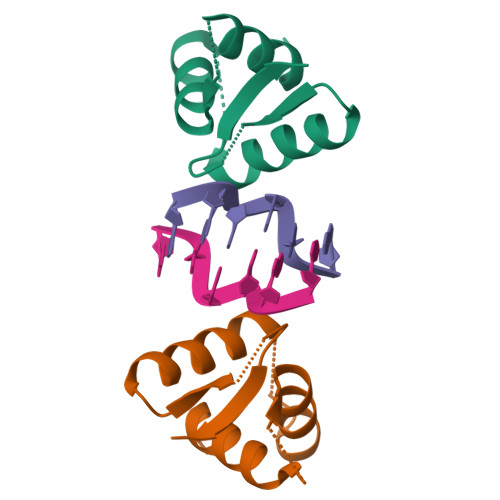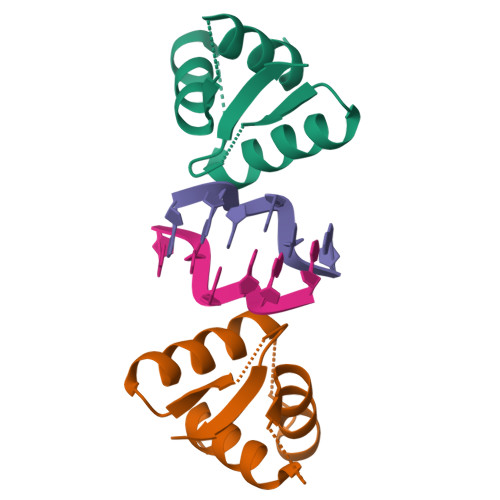Dual conformational recognition by Z-DNA binding protein is important for the B-Z transition process.
Park, C., Zheng, X., Park, C.Y., Kim, J., Lee, S.K., Won, H., Choi, J., Kim, Y.G., Choi, H.J.(2020) Nucleic Acids Res 48: 12957-12971
- PubMed: 33245772
- DOI: https://doi.org/10.1093/nar/gkaa1115
- Primary Citation of Related Structures:
7C0I, 7C0J - PubMed Abstract:
Left-handed Z-DNA is radically different from the most common right-handed B-DNA and can be stabilized by interactions with the Zα domain, which is found in a group of proteins, such as human ADAR1 and viral E3L proteins. It is well-known that most Zα domains bind to Z-DNA in a conformation-specific manner and induce rapid B-Z transition in physiological conditions. Although many structural and biochemical studies have identified the detailed interactions between the Zα domain and Z-DNA, little is known about the molecular basis of the B-Z transition process. In this study, we successfully converted the B-Z transition-defective Zα domain, vvZαE3L, into a B-Z converter by improving B-DNA binding ability, suggesting that B-DNA binding is involved in the B-Z transition. In addition, we engineered the canonical B-DNA binding protein GH5 into a Zα-like protein having both Z-DNA binding and B-Z transition activities by introducing Z-DNA interacting residues. Crystal structures of these mutants of vvZαE3L and GH5 complexed with Z-DNA confirmed the significance of conserved Z-DNA binding interactions. Altogether, our results provide molecular insight into how Zα domains obtain unusual conformational specificity and induce the B-Z transition.
Organizational Affiliation:
Department of Biological Sciences, Seoul National University, Seoul 08826, Korea.



















